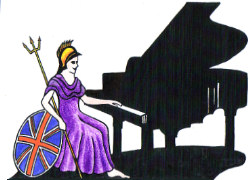Teachers, Accompanists and Piano Entertainers in the UK

UK Piano Page

251 Kings Road
Chelsea
Chelsea, London
England
Chelsea London was founded on the famous King's
17a Electric Ln
Brixton, London SW9 8LA
England
South London Piano Moving is a friendly and
20 Red Lion St
Holborn, London WC1R 4PQ
England
North London Piano Moving professional team can
Kensington, London SW5
England
Kensington Piano removals and disposals operating
Camden Town, London WC1
England
Westminster,Central London piano moving and
Music Festival for performers and guests Our 10th
18-06-2022 12:30PM
The Morecambe Bay Piano Group was set up to extend
11-12-2021 01:00PM
The Morecambe Bay Piano Group was set up to extend
08-01-2022 01:00PM
The Morecambe Bay Piano Group was set up to extend
12-02-2022 01:00PM